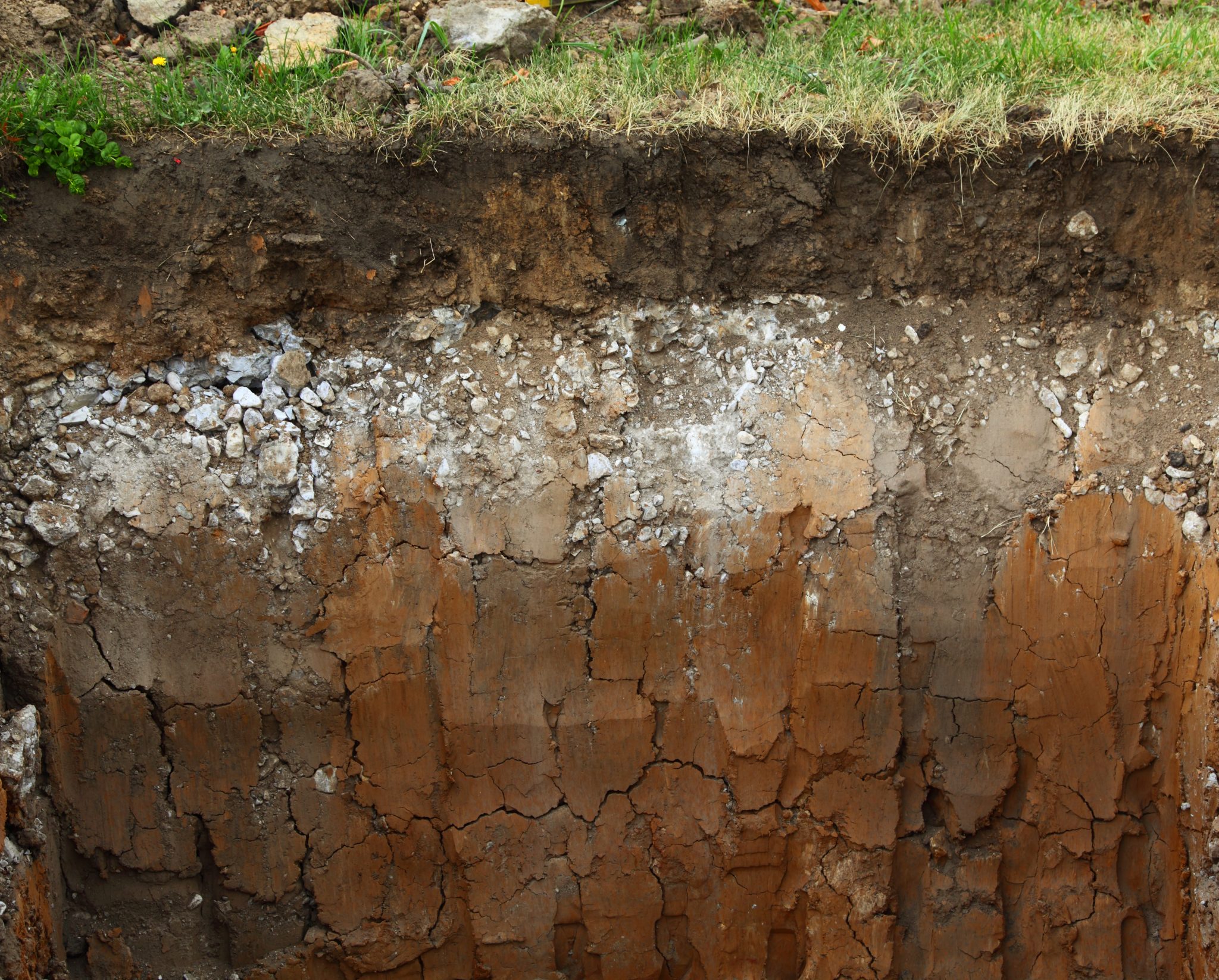Healthy Soils

Soils provide plants with mechanical support, water, and dissolved minerals and nutrients. Because most plant roots are found in the topsoil, or A horizon, this layer has the greatest effect on plant growth. A typical soil in good condition has four physical components: minerals, air, water, and organic material.
Mineral
The mineral component is measured by particle size distribution. Sand is the largest particle, clay is the smallest, and silt particles are in between. The distribution of these particles determines a soil’s texture.
- A sandy loam may have 70 percent sand, 20 percent silt, and 10 percent clay.
- A clay loam may have 30 percent sand, 40 percent silt, and 30 percent clay.
- A clay soil generally contains at least 45 percent clay.
Fine-textured soils (clayey soils) have small pore spaces and hold water molecules tightly. Generally, more total water is available to plants in a clayey soil than in a sandier soil. However, the small pore spaces limit air and water movement and increase surface runoff. (POP OUT BOX: Clay particles—and organic matter—contain the majority of the soil’s cation exchange capacity. Cation exchange capacity (CEC) is a measurement of a soil’s capacity to retain nutrients. Soil has a net negative charge which attracts the positive charge of soil nutrient cations (like potassium, calcium, and magnesium), similar to the way a magnet attracts opposing charges.)
Clays are sticky when wet and form hard clods when dry, making moisture content extremely important during tillage. The common misconception that clayey soils are heavier than sandy soils has lead to the incorrect term heavy clay. Dry clays are actually lighter than dry sands because of greater total pore space and more air. Holding more water does make clay soils seem heavier to the producer working them.
Coarse-textured (sandy) soils are inherently droughty because they have large pore spaces and hold little water. They are loose, less likely to compact, and easy to till. However, soils containing high proportions of fine sand and some clay are easily compacted as clay fills the pore space between the sand particles.
Air
The texture of a soil is usually the first thing we notice about it, but generally a little less than half is composed of mineral matter. The rest is pore space filed with air and water.
Plant roots and beneficial organisms need oxygen to survive. Soil material without pore space for air is not a soil; it is brick, concrete, or rock. A poorly drained soil has pores filled with water for long periods and is one in which many plant roots cannot survive. A soil generally grows healthier plants when about half of the pore space is filled with air and the other half with water. There are obviously plants adapted to poorly drained soils or we wouldn’t have densely vegetated swamps, but most garden and landscape plants prefer well-drained soils.
Water
Water is an essential component of soil, especially when viewed from a plant’s perspective. Though plants require the air and water found in soil pores, roots can only absorb nutrients from the soil water. Dissolved nutrients in solution establish equilibrium between the soil water and the soil particles, clay, and humus. Sandy soils are often better drained than more clayey ones because of larger pore spaces between particles., but this also creates lower nutrient availability for plant roots. The small pore spaces in clayey soils attract and hold more water against the pull of gravity, making them slower to drain. However, this also makes a better environment for available plant nutrients. To understand growing plants, it is essential to see the relationship of soil water and soil texture.
Organic Matter
Organic matter can be defined as the carbon-containing materials in soil formed from decomposing plant tissues, microorganisms, animals, and animal waste materials. Organic matter performs many functions which support soil health, by increasing the amount of plant-available water and nutrients which a soil can hold. Soil organic matter also improves soil structure and decreases risk of soil compaction.

